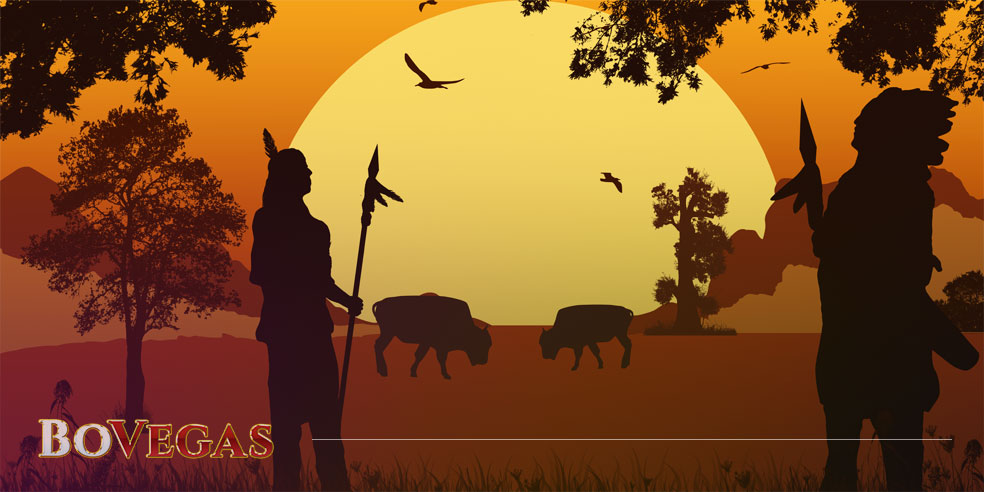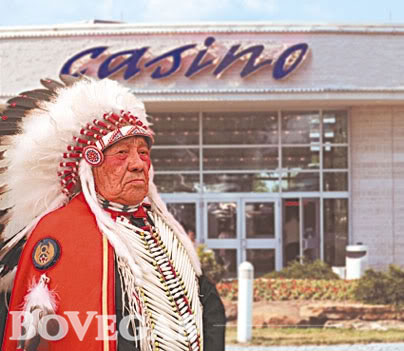



The entire world knows about Las Vegas as a key gambling center, and Sin City’s various casinos and other attractions continue to draw many people from all over the world. But it is not well known that there are lots of other American facilities out there, and a significant proportion of these are operated and owned by Indians!
Native American gambling is responsible for 43% of the whole industry in the US. This may surprise you, but these casinos are way bigger than those in Las Vegas, and they also bring in a lot more revenue!
In 2017, figures reached more than $32 billion! Las Vegas Strip had revenue of less than $18 billion that year (which includes not only gaming but also hotels and foods).
Casinos run by native Americans have only really been developing for the past couple of decades. After all, it wasn’t until 1988 that gambling facilities were finally regulated by law. That all started in the early 1980s, when some Indian tribes began to operate bingo halls. After a series of legislative discussions, state courts allowed them to begin their operations.

This issue is also being actively discussed among Indians. Many of them believe that this path, no matter how profitable it is from a purely economic point of view, contradicts their authentic culture.
Regardless of what the community thinks, casinos are at least making lots of improvements. Their development enhances the infrastructure of the tribal lands, create opportunities for education, and provide social programs. Casinos do generate an impressive number of jobs, but up to 75% of them end up going to non-Indian employees. Still, the unemployment rate among Indians has largely decreased due on account of the gaming businesses.
At the moment, 238 tribes operate 474 gaming facilities in 28 states. The popular opinion that all Indians are involved in this business is untrue — as this number is less than 50% of federally recognized tribes!
There are some things you need to know when you visit Native American casinos. They are not designed for tourists; and apart from the games themselves, you are not likely to find anything really interesting. Plus, as they are located on tribal lands, there will be local police guarding the facilities. This usually means the control is going to be tougher than in most other casinos!
As for the selection of games, there are not so many differences between the facilities run by Native Americans and other venues in the country. The payouts may vary greatly, though. In many states, Indian casinos don’t have to report payback percentages, which makes some of the games (especially slots) tougher for the players!
There are three classes of gambling activities under the Indian Gaming Regulatory Act (IGRA) that was adopted in 1988:
The Morongo Casino located in California is among the most popular ones run by Indians. Cabazon band tribe that stands behind this venue was the first one to start providing gambling games before the 1980s.
At the moment, the Morongo is a 27-story resort with more than 300 hotel rooms which offers hundreds of games. There’s a 22-table poker room, high-limit area for high rollers, and many other attractions.
The Foxwoods Resort Casino in Connecticut is also one of the most popular facilities in the reservation area. It is one of the largest casinos in the US and the whole world — covering an area of 9,000,000 square feet!
The Foxwoods has 350 gaming tables and around 5,500 slot machines. There are also numerous restaurants, more than 2,000 hotel rooms, luxury stores, and many more. Until 2012, the World Poker Tour was held in one of the casino’s poker rooms.
Another facility located in Connecticut is the Mohegan Sun Resort. It is a stunning building situated near the Thames river. It has a part with a planetarium-like ceiling: fiber optics and lighting effects are the features that make the resort uniquely beautiful. There’s an indoor waterfall which symbolizes the tribe’s migration history, along with some meaningful decor in a traditional Native American style. It offers hundreds of table games, slots, and all sorts of popular gambling entertainments.

Nowadays, the UK is known to be a country with some of the most effective gambling regulations in the world. The UK Gambling Commission keeps a wary eye on any operators that have been licensed to offer their services within the country. However, this doesn’t mean that gaming in the UK is going through a […]
The Guinness Book of World Records is considered to be the best-selling copyrighted book of all time. There are thousands of different records, and of course, some of them do relate to gambling. Do you know about the largest black table that ever existed? How old is the oldest croupier? Read on to find out! […]
It won’t be a surprise if we say that bookmakers love accepting bets; and they also try and grab any advantage they can, however meager, whenever there’s any chance at all for a gambler to place a bet. “If you think of it, you can wager on it!” That’s the golden rule of all the […]
Since the very beginning of the cryptocurrency era (its exact launch date is still disputed, though), it was clear that crypto-money as such was set to conquer as many areas of use as possible. The rule is that when the theoretical benefits of using cryptocurrency for this or that practical purpose becomes apparent, then it […]
If you love gambling and have been to a land-based casino at least once, you may have thought about becoming a dealer. Playing the same game but from the opposite side, while communicating with other players, sounds like a dream job, right? A dealer is a straightforward job, and you will be the heart and […]
On Monday September 14, MGM announced that it plans to open its first smoke-free casino at the end of September, when Park MGM will finally reopen its venues to players and tourists. The resort comprises around 2,990 rooms and various restaurants, and it’s set to be reopened on September 30. The venue has been closed […]
Online gambling has undoubtedly taken a place of true supremacy over the casino industry during the pandemic. And the reason for that is quite clear: online casinos are more accessible, and you can always count on some encouragement from the casino administration to help you boost your game. However, this digital revolution has only been […]
The large selection of online gambling sites out there can make players somewhat puzzled, and give them a feeling of uncertainty about making the right choice of casino. Each online gambling venue offers its own conditions, games, and various bonuses, of course; but the most important thing is the reliability of the casino and the […]